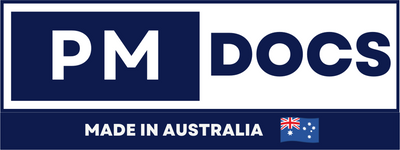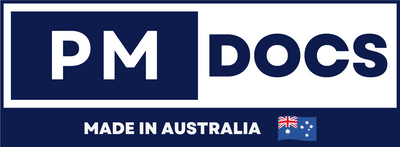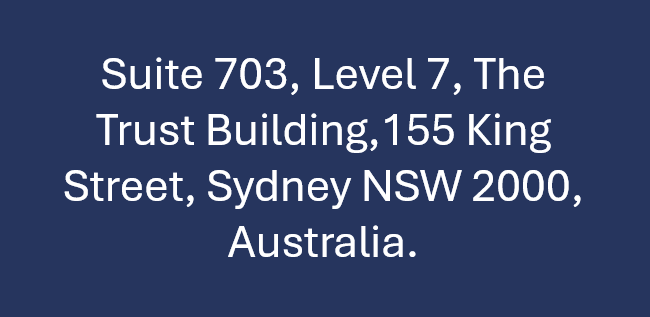ISO 31000 Risk Management Standard In Australia AS/NZS Guidelines
Navigating Uncertainty: The Power Of ISO 31000 And AS/NZS Risk Management Guidelines In Australia
In today's dynamic business landscape, uncertainty is the only constant. From economic shifts and technological disruptions to environmental concerns and regulatory changes, organisations face a multitude of risks that can impact their objectives, reputation, and bottom line. For Australian businesses, a robust and systematic approach to risk management isn't just good practice; it's a strategic imperative. This is where ISO 31000, the international standard for risk management guidelines, adopted locally as AS/NZS ISO 31000, becomes an invaluable asset.

This comprehensive guide will delve into the essence of ISO 31000, its specific relevance in Australia and New Zealand through the AS/NZS adoption, and how organisations can leverage its principles and framework to build resilience and achieve sustained success.
What Is ISO 31000? A Global Benchmark For Risk Management
ISO 31000:2018 is an international standard that provides principles and generic guidelines on risk management. Developed by the International Organization for Standardization (ISO), it is designed to be applicable to any organisation, regardless of its type, size, activities, or location.
Key Characteristics of ISO 31000:
-
Principles-based: It champions a set of core principles that underpin effective risk management.
-
Generic: It offers guidelines rather than specific requirements, making it adaptable to diverse contexts.
-
Not certifiable: Unlike standards like ISO 9001 or ISO 27001, you cannot get certified to ISO 31000. Instead, organisations use it to improve their existing or develop new risk management processes and frameworks.
- Integrative: It promotes the integration of risk management into all organisational activities and decision-making processes.
The Power Of AS/NZS ISO 31000: Local Relevance, Global Best Practice
For Australian and New Zealand organisations, ISO 31000 isn't just an international recommendation; it's the national standard for risk management. Standards Australia and Standards New Zealand have jointly adopted ISO 31000 as AS/NZS ISO 31000:2018 Risk management – Guidelines.
This adoption signifies that the principles and guidelines outlined in the international standard are considered best practice within the Australian and New Zealand regulatory and business environments. It provides a common language and framework that resonates with local legal requirements, corporate governance expectations, and industry-specific challenges. Prior to this, many Australian organisations relied on AS/NZS 4360, which ISO 31000 effectively superseded, integrating and enhancing its core concepts.
By aligning with AS/NZS ISO 31000, Australian organisations can:
- Demonstrate adherence to internationally recognised best practices.
- Streamline their risk management approaches across different departments and projects.
- Improve communication and consultation regarding risks, both internally and externally.
- Build stakeholder confidence, including investors, regulators, and customers.
The Core Of ISO 31000: Principles, Framework, And Process
ISO 31000 is structured around three main components that work in tandem to establish, implement, maintain, and continually improve risk management within an organisation.
1. The Principles of Risk Management
The standard outlines eleven core principles that should be considered to make risk management effective and value-adding. These principles are the foundation upon which the entire risk management system should be built.
| Principle | Description |
|---|---|
| Integrated | Risk management is an integral part of all organisational activities, not a standalone process. |
| Structured and Comprehensive | A structured and comprehensive approach to risk management contributes to consistent and comparable results. |
| Customised | The risk management framework and process should be proportionate to the organisation’s external and internal context, objectives, and risks. |
| Inclusive | Appropriate and timely involvement of stakeholders enables their knowledge, views, and perceptions to be considered. |
| Dynamic | Risks can emerge, change, or disappear, requiring continual monitoring and review. |
| Best Available Information | Risk management explicitly takes into account limitations and variations in available information. Decisions are based on the best available information. |
| Human and Cultural Factors | Human behaviour and culture significantly influence all aspects of risk management at each level and stage. |
| Continual Improvement | Risk management is continually improved through learning and experience. |
2. The Risk Management Framework
The framework provides the architecture for integrating risk management into an organisation's overall governance and strategic planning. It acts as the backbone, ensuring that risk management is embedded throughout the organisation in a systematic and sustainable manner.
Key Components of the Framework:
-
Leadership and Commitment: Top management must demonstrate commitment to risk management, defining policy, allocating resources, and assigning responsibilities.
-
Integration: Risk management must be integrated into all organisational processes, including strategy, planning, project management, and operational decision-making.
-
Design: Establishing the risk management framework involves understanding the organisation's context, articulating its risk management policy, and defining roles, responsibilities, and authorities.
-
Implementation: Executing the risk management framework involves deploying the risk management plan and processes across the organisation.
-
Evaluation: Periodically assessing the effectiveness of the risk management framework to ensure it is meeting its objectives.
- Improvement: Continually enhancing the suitability, adequacy, and effectiveness of the risk management framework and its components.
3. The Risk Management Process
The risk management process involves the systematic application of policies, procedures, and practices to the activities of communicating and consulting, establishing the context, and identifying, analysing, evaluating, treating, monitoring, and reviewing risk. It is an iterative process, meaning it should be continually revisited and refined.
| Step | Description | Key Actions |
|---|---|---|
| 1. Scope, Context, and Criteria | Define the scope of the risk management activity, understand the internal and external environment, and set the criteria for risk evaluation. | Clearly define objectives, identify internal/external factors affecting objectives, establish risk criteria (likelihood, consequence, risk appetite, tolerance). |
| 2. Risk Identification | Discover, recognise, and describe risks that might help or prevent an organisation from achieving its objectives. | Brainstorming, checklists, interviews, historical data analysis, scenario analysis, SWOT analysis. |
| 3. Risk Analysis | Understand the nature of risk and determine the level of risk. Involves analysing consequences and likelihood. | Determine existing controls, assess likelihood, assess consequences, measure the level of risk (e.g., using a risk matrix). |
| 4. Risk Evaluation | Compare the results of risk analysis with the established risk criteria to determine if further action is needed. | Prioritise risks, make decisions on which risks need treatment, which can be accepted, or which require further investigation. |
| 5. Risk Treatment | Select and implement options for addressing risks. This involves changing the likelihood or consequences of risks. | Avoid the risk, take or increase the risk, remove the risk source, change likelihood, change consequences, share the risk (e.g., insurance), retain the risk by informed decision. Develop risk treatment plans. |
| 6. Monitoring and Review | Routinely check, supervise, observe, or determine the status of the risk management framework and process. | Regularly assess the effectiveness of controls, review risk assessments, identify emerging risks, track progress of treatment plans, and ensure compliance with policies. |
| 7. Communication and Consultation | Ongoing throughout the entire process, sharing information and engaging with internal and external stakeholders. | Establish communication plans, ensure transparent reporting, engage stakeholders in identification, analysis, and treatment, foster a culture of open dialogue. |
Benefits For Australian And New Zealand Organisations
Embracing AS/NZS ISO 31000 offers a multitude of tangible benefits for organisations operating in Australia and New Zealand:
-
Improved Decision-Making: By systematically identifying and evaluating risks, organisations can make more informed decisions that are aligned with their strategic objectives and risk appetite.
-
Enhanced Organisational Performance: Proactive risk management reduces the likelihood of negative surprises and allows for the exploitation of opportunities, leading to more consistent performance.
-
Better Compliance and Governance: Helps organisations meet legal, regulatory, and corporate governance requirements by providing a structured approach to identifying and managing compliance risks.
-
Increased Stakeholder Confidence: Demonstrating a commitment to robust risk management builds trust with investors, customers, employees, and regulators.
-
Optimised Resource Allocation: Enables organisations to prioritise risks and allocate resources more effectively to the areas of greatest potential impact.
-
Greater Resilience: Develops the organisation’s ability to anticipate, withstand, and recover from adverse events, fostering long-term sustainability.
- Promotion of an Ethical Culture: Encourages transparency, accountability, and a shared understanding of risks across all levels of the organisation.
Implementing AS/NZS ISO 31000 In Practice
While ISO 31000 is a guideline, its implementation requires commitment and a strategic approach. Here are some practical steps for Australian organisations:
-
Gain Leadership Buy-in: Secure the active support and commitment of the board and senior management.
-
Tailor the Approach: Understand that ISO 31000 is not a one-size-fits-all solution. Customise the framework and process to your organisation's unique context, size, and nature of risks.
-
Integrate, Don't Isolate: Embed risk management into existing business processes, strategic planning, and operational activities rather than treating it as a separate, isolated function.
-
Communicate and Consult Continuously: Foster a culture of open communication about risks. Engage employees at all levels, as they often have the best insights into operational risks.
-
Provide Training and Awareness: Educate staff on the importance of risk management, their roles and responsibilities, and how to apply the organisation's risk framework.
-
Start Simple and Iterate: Don't aim for perfection immediately. Start with key areas, learn from experience, and continually improve your risk management system.
- Leverage Technology: Utilise risk management software and tools to streamline processes, improve data collection, analysis, and reporting.

Conclusion
In a world defined by constant change and uncertainty, effective risk management is no longer optional; it's a fundamental pillar of organisational success. AS/NZS ISO 31000 provides Australian and New Zealand businesses with a powerful, internationally recognised framework to navigate these complexities. By embracing its principles, establishing a robust framework, and diligently applying its process, organisations can not only minimise threats but also uncover opportunities, enhance decision-making, and build a more resilient and sustainable future.
Don't let uncertainty dictate your destiny. Empower your organisation with the strategic guidance of AS/NZS ISO 31000 to confidently face tomorrow's challenges and seize its opportunities.



